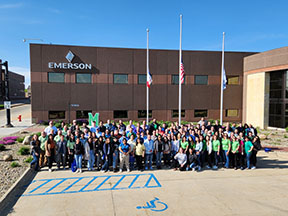Drake professor presents on political polarization at Marshalltown Public Library

T-R PHOTO BY DORIE TAMMEN — Marshalltown Public Library Director Sarah Rosenblum, left, is pictured with Drake University Professor Dennis Goldford, who gave a presentation on political polarization at the library on Sunday.
Political polarization in recent years seems to be about as bad as it’s ever been. Dennis Goldford, professor of political and constitutional theory at Drake University since 1985, doesn’t anticipate any improvement in the near future.
The Marshalltown Public Library hosted a program by Professor Goldford on Sunday entitled “Political Polarization: It’s Ugly And There’s No End In Sight.” It was offered through Humanities Iowa and the State Historical Society of Iowa.
After the 2020 election, the United States began “a troubling and potentially dangerous era” in national politics, according to Goldford, who explained that he believes it did not begin and won’t end with the presidency of Donald Trump.
The statistics are revealing — 65% of voters say they always/often feel exhausted when thinking about politics, and 55% always/often feel angry. Conversely, 56% of voters rarely/never feel hopeful thinking of politics, and 78% rarely/never feel excited.
Crisis points include the replacement of the term “opponents” with the term “enemies,” the radicalization of the GOP, and continuing political fault lines, according to Goldford.

CONTRIBUTED PHOTO — Outside of the event, John Worden of Green Mountain, left, pictured with Rep. Sue Cahill (D-Marshalltown), right, led a one-man protest and held a sign that read “MPL Censors.”
Nearly 60% of Democrats view Republicans simply as “opponents,” while nearly 60% of Republicans consider Democrats to be “enemies.” About 40% of Democrats consider Republicans to be “enemies,” and a similar percentage of Republicans view Democrats as “opponents.”
Threats of violence against members of Congress are also a telling statistic. They quadrupled during Donald Trump’s first year in office, from under 300 to 3,390 and more than doubled by 2020. After Jan. 6, threats of violence or death to members of Congress were estimated by Capitol Police to number more than 10,000.
Another interesting statistic is related to differences in party coalitions: 63% of Republicans and independents who lean Republican consider themselves to be conservative, while just 32% of that group call themselves moderate. Only 3% say they are liberal. Among Democrats and independents who lean Democratic, 46% consider themselves to be liberal, 45% say they are moderate, and 8%, conservative.
In addition to that, since 1981, the government has been divided 74% of the time, with the presidency controlled by one party, and Congress by the other, or the two houses of Congress controlled by different parties.
Ultimately, divisions between Republicans and Democrats are no longer simply based upon traditional qualities such as race, gender, education, etc. Tom Edsall of the New York Times wrote, “Polarization now encompasses sharp disagreements over the significance of patriotism and nationalism, as well as a fundamental split between those seeking to restore perceived past glories and those who embrace the future.”
Even conservative writer Peter Wehner has had harsh words for the GOP: “The Republican Party has grown more radical, unhinged, and cult like every year since Mr. Trump took control of it … .Its instincts are nativist, protectionist and isolationist. But the most significant fusion is ethical and moral. The Republican Party keeps getting darker. It has become anti-intellectual, conspiracy-minded and authoritarian, intemperate and brutish, transgressive and anarchistic. And there’s no end in sight.”
Party coalitions have flip-flopped since the Reagan era, too. Democrats, the party of union halls and working class Americans, now include much of the nation’s professional class. The GOP, formerly the party of Abraham Lincoln and more recently the party of Americans with four-year college degrees, is increasingly becoming the party of the white working class and an increasing number of Hispanic Americans.
Goldford sees the central conflict as this: “The mostly white, Christian, and heavily rural nation the country used to be, versus the urbanized, racially and religiously diverse country America is becoming.” He reminded the audience that the Constitution does not protect religion; instead, it protects religious freedom. He also stated, “The more we religify politics, the more we politicize religion.”
Goldford made no predictions about future election results. The polling is too close. He ended his presentation with a question: “So how does one vote?” His answer: “Many people, especially younger voters, want to be enthusiastic about a vote choice. That’s fine, but there are no perfect candidates. More often than not, voting is a matter of holding your nose and picking the candidate who’s less objectionable from your point of view. We may not be inspired by voting for the lesser of two evils, but that’s politics — we are always confronted with the evil of two lessers. No one is enthused about chemotherapy, but it’s certainly less bad than cancer itself.
- T-R PHOTO BY DORIE TAMMEN — Marshalltown Public Library Director Sarah Rosenblum, left, is pictured with Drake University Professor Dennis Goldford, who gave a presentation on political polarization at the library on Sunday.
- CONTRIBUTED PHOTO — Outside of the event, John Worden of Green Mountain, left, pictured with Rep. Sue Cahill (D-Marshalltown), right, led a one-man protest and held a sign that read “MPL Censors.”







